TV THOUGHTS: Lal Masjid over and its long term implications unfold? TV channels seek to give inner meaning to news
Let's begin this time with the promo that Aaj TV has for the Live with Talat programme. It reflects the times that we are in and the challenge that all channels face. To give meaning to news - to give to bewildered viewers a sense of direction.
I recall as I write that Syed Talat Hussain tells viewers that in the lives of societies there come many events like war, like terrorism, like natural disasters, like elections, and then long periods of army rule. There is a flood of news, and viewers are inundated with stories and information, almost.
It becomes a challenge to determine an inner and outer sense of direction in the news that is taking place. There is mention of national integrity and official propaganda. Therefore to find out the reality and understand the meaning of what is happening, viewers should tune into the Live with Talat" programme.
In a way this is a sort of summing up that could be used to reflect the predicament of TV viewers as they get so much of information and opinion that they find it difficult to believe. Or, they realise that their beliefs are being eroded or rendered vulnerable. That is the power of the media and with the Lal Masjid - Jamia Hafsa conflict and bloody confrontation that has come to an end, Pakistani viewers have experienced something that will be remembered with sadness for a very long time. Indeed there are many dimensions to what the nation watched on TV channels that had special round the clock transmissions to depict whatever was possible and whatever was allowed. And not just viewers but the media itself in this country has also realised that it needs to learn "conflict reporting".
Of course, we saw TV journalists on the battle front in Islamabad's G 6 sector wear bullet proof jackets, subsequent to the risks they were exposed to on the very first day of the conflict when a TV cameraman was killed and among others another was hit in the head, too. One must mention here that while journalists have demanded life insurance, the KUJ, the Association of TV Journalists and Photographers Association have also demanded of the owners of newspapers and TV channels to look into the matter. The government has also been asked to facilitate the media people for live coverage of conflict reporting, while "devising some code of ethics".
There was a meeting held in Karachi, which the KUJ President Shamimur Rehman chaired, and the agenda was the killing of the cameraman of an Islamabad based TV channel, closure of the Islamabad Press Club, barring of media persons from covering the Lal Masjid operation, and disallowing them from entering the Islamabad hospitals where the wounded were taken. The meeting also stressed the need for journalists to be given training in conflict reporting.
This is symbolic of the point that not only is there conflict around us, but that in times to come it could well increase. And media, especially TV will be playing a strategic, crucial and pivotal role. It will not be easy to put the clock back here too. In passing one needs to mention what the All Pakistan Newspaper Society has said recently. It has welcomed the resignation of the Federal Minister for Housing Syed Safwanullah who resigned on Monday in compliance with his party (MQM's) directives.
The APNS had urged the Muttahida Quami Movement "to remove Safwanullah from his ministry in the federal government as he was the president of the Muhajir Rabita Council at the time of the issuance of a journalists hit list (with 13 names).
This list, said APNS, issued on 22nd May by the Rabita Council had the names of anti-Muhajir "journalists".
The APNS has also said that the only outstanding item from the agenda of actions urged by the APNS is for the MQM leadership to persuade the MRC to withdraw the list issued earlier, said the press release.
DISTURBING THEMES:
There have been other serious major news stories on the channels that have held the attention of the viewers, besides the Lal Masjid-Jamia Hafsa complex. Stories that relate to the hearing of the Supreme Court reference case or the Combined Opposition, parties meeting held in London, and its fall-out and the floods in Balochistan and Sindh.
But the story of the two brothers who challenged the writ of the state, Maulana Abdul Aziz and Maulana Abdul Rasheed Ghazi from the Madrassa mosque complex in G6 sector of Islamabad, was the lead story for eight days. Day after day, night after night, almost on an hourly basis, TV viewers were tuned into TV sets, at the first opportunity to know what was happening, as the tragic drama was unfolding in the country's capital. It was for the first time that Islamabad experienced a curfew too.
There are several disturbing themes that have emerged from the security operation that was launched and which came to an end successfully after eight days (on 11th July). There is the fact that Maulana Abdul Aziz was shown on state owned PTV in an entirely inappropriate manner (to say the least) after he was caught trying to escape in a Burqa. To have made him wear that Burqa again for the interview was absolutely uncalled for.
This is the media dimension to the bloody confrontation. But there are other implications being reflected in a swift focus on the Madrassa theme that has come into panel discussions and live phone-in shows...What is the world of over 20000 madrassas in Pakistan like, and what is their inner reality? Are they all like Lal Masjid or was this an exception? There are long implications of what has just happened on this front, and in these defining times that Pakistan lives through, will unfold tests and trials there is no escape from.
I would like to return to this theme next week also, unless of course there is something else that takes over in a context where one major theme seems to be driving out the other for the TV channels. They have once again moved from one level of strength to another. They have shown courage and an ability to stay and fight. They didn't really duck for cover!
A DISAPPOINTING REPORT:
It was very disappointing to see this short film report (Indus TV) on the fire that destroyed dozens of shops and their goods in one of the newly built shopping plazas of Clifton, on 23rd June 2007. That was the day that Karachi was hit by a lethal combination of rain and storm with a wind velocity that created havoc never seen before in the Sindh capital.
Sadly, in all that Karachi suffered on that count, the incident of the fire in the shopping plaza located on the Clifton main road got sidelined in the media, or almost. Not the slightest doubt that this was a big story and there was a human side to it. But it seems, in retrospect, that both the media and the public focus moved onto other issues more demanding.
But the Indus TV chose to focus on this some days ago, and the young enthusiastic reporter and his newsroom handled a strong story with a casualness and carelessness that were so glaring. The report showed the building after the fire, and focused on the suffering of the shopkeepers briefly and said that while there had been no government or societal help for them after that initial first day response, they were ruined in financial terms.
And that they were compelled to sell at rock bottom prices whatever goods (cloth mainly it appeared) had been saved. And the shopkeepers were shown selling the same cloth on pavements outside the shopping plaza on the Clifton main road.
The report did not have any facts about the shopkeepers. No numbers, no names and no background material for instance on the kind of fire safety arrangements that the building had. Or whether it had nothing. That is more likely. This is a part of new, upper class, developed Karachi, Clifton. Contemplate the monstrosity of the infrastructure neglect. And now try and imagine what must be lacking in the other parts of the city.
This story should have had authentic details with interviews of relevant city government and provincial government officials or the Clifton Cantonment Board and so on. The volume of loss should be have been indicated at least in approximate terms.
This is not the first time that I have seen a film report on a TV channel that has been poorly conceived in editorial terms. Content wise it has been so inadequate, even though it has had the advantage of visual portrayal. In the case of the Clifton shopkeepers who were affected, their claims that they were selling at one tenths should have been counterchecked.
But this Indus TV report did have viewers wondering about the general perception that Karachiites or even residents in other urban centres of the country have about the levels of safety measures, preventive especially, that exist. TV channels can play a very powerful role in this vital field - which appears to have been neglected, even though urban growth is spreading out rapidly.
NOSTALGIA POWER:
One of the pleasures of channel surfing is that sometimes I run into programmes that are centered around the nostalgia factor. And memory lanes have a huge magnetic attraction. Perhaps not so much for the young, even though it seems from the music channels that old songs and singers and films from yesteryears are high on popularity graphs.
I want to mention a show called "Unforgettables" that I saw on the G channel a couple of times, and it was being hosted by a young lady who did appear to be the type who would be excited about the Indian film music of the forties and the fifties - Hemant Kumar or Geeta Dutt or O.P Nayyar and Asha Bhosle. There were names like these that she mentioned and had so much of information to offer, in addition to the melodies from the past. I think I caught this show sometime on a Sunday morning, and it gave to those two Sundays a somewhat welcome beginning - sometimes one seeks to get away for a short while from the grim (even bloody) reality that surrounds us so often, and so easily.
In the Unforgettables that I saw for the first time I was able to see a duet picturised on Kishore Kumar and Madhubala from the popular film Mr and Mrs 55. The programme was the melodies of the Indian film composer O.P Nayyar and in addition to the music was also being provided valuable information on the personal lives of the film stars and film composers relevant to the song. The compere, Nini had a good script with lots of information, that appeared the end product of sustained research.
Nini spoke of how Asha Bhosle was romantically linked to the music composer O.P.Nayyar, who understandably didn't work with Lata Mangeshkar as much as he could have. The reason was that Asha didn't encourage Nayyar to work with other female singers.
On another Sunday let me share a very personal wish come true when I was able to see for the first time on screen a Hemant Kumar soft romantic number from a film called Kohra. It has those haunting lyrics that read thus: Yeh Nayen Darey Darey (talking of beautiful eyes that are loving and hesitant). The song is picturised on the actress Waheeda Rehman and the quality of the close-ups and the editing was superb.
It would be a classic even today. There were sensitive, sensuous close-ups of Waheeda Rehman tying her long hair, or wearing her bangles or wearing her dupatta, as she beautifies herself to meet her lover. But the shyness and the adoration in her eyes is the only tell tale sign that reflects her joy, so concealed in her graceful body language, draped in a traditional sari.
But with this song was relevant information that compere Nini provided - of how close Waheeda Rehman was to Guru Dutt and how he committed suicide in 1964. There was mention of films like Pyasa and Sahib Bibi Aur Ghulam. She also underlined how interpersonal relationships between men and women in the film industry were instrumental in the creation of professional and artistic work.
Nini then mentioned how Waheeda Rehman began working with Dev Anand and viewers got a chance to see another famous duet from the past. The lyrics were "Yad Kiya Dil Ney Kahan Ho Tum," The show has an email address also which reads thus: "Unforgettables @ gmail.com and that should, for those who would to walk down memory lane it is an attractive option.





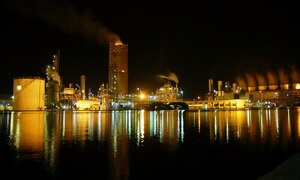
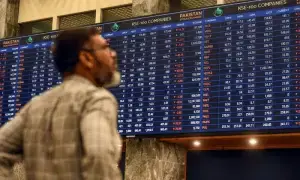
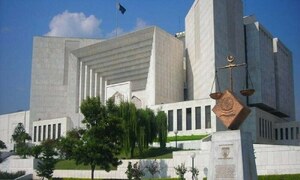





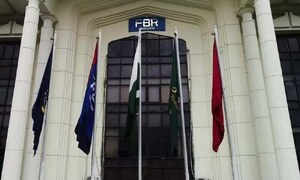
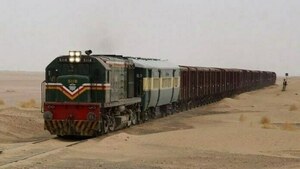


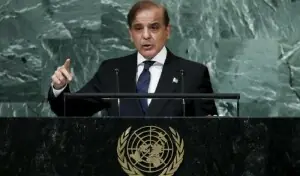

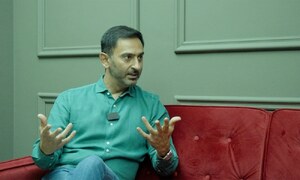
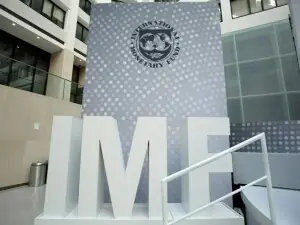
Comments
Comments are closed.